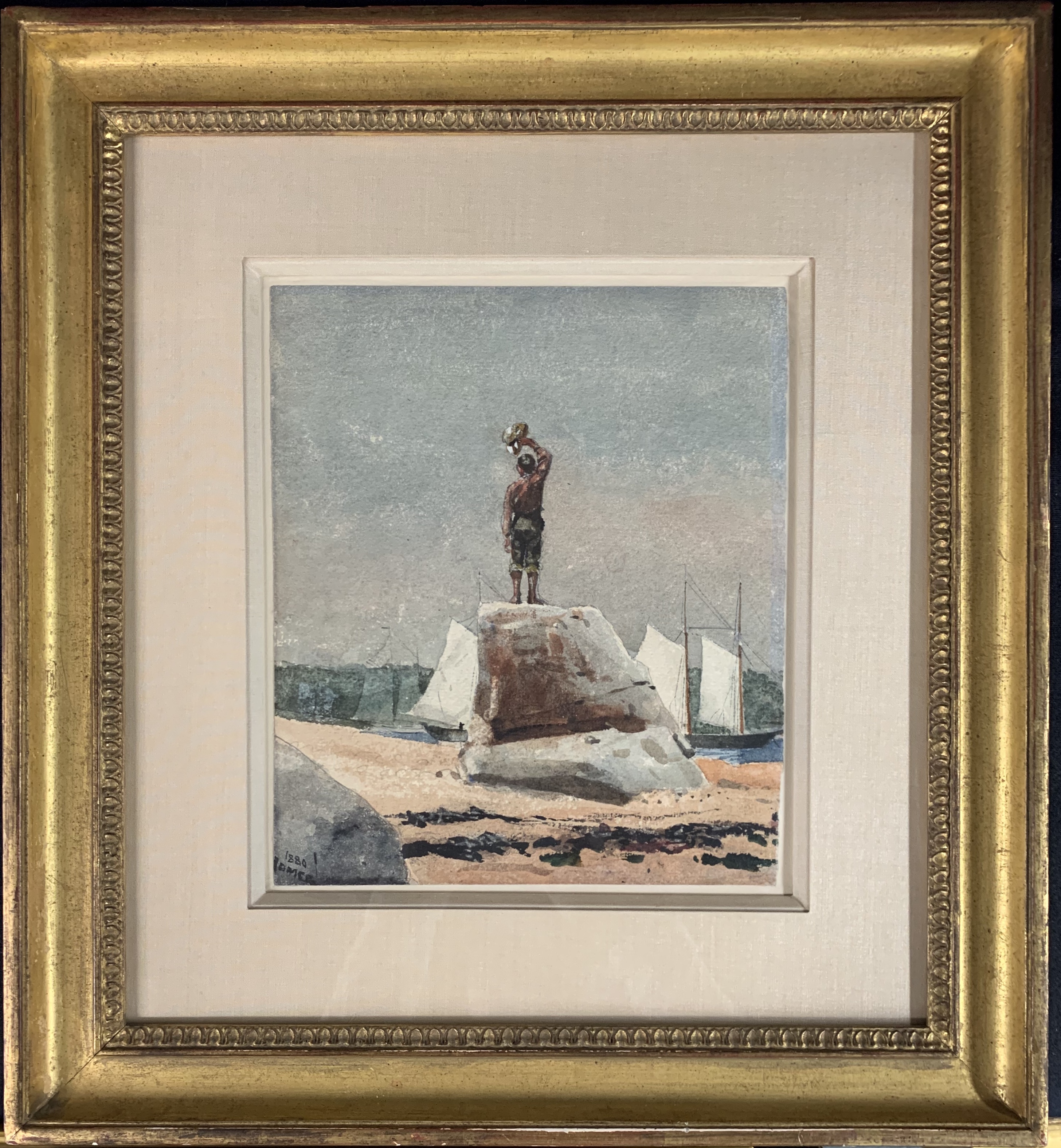Gloucester, MA – The Cape Ann Museum has received a Winslow Homer watercolor for its permanent collection. The promised gift, Boy Hailing Schooners, 1880, was hung for the first time at the Museum this weekend and arrived just before the Museum’s nationally acclaimed and most popular exhibition to date, Homer at the Beach: A Marine Painter’s Journey, 1869-1880, closes December 1.
“We are so very grateful for this important work to join our growing permanent collection,” said Museum Director Oliver Barker. “It points to our concerted strategy to build the Museum’s collections by adding significant and iconic works that attest to the paramount role that Cape Ann has played in shaping both American art and history.”
This new addition is a promised gift from Janet and William Ellery James, whose family history on Cape Ann goes back many generations. William (“Wilber”) serves on the Museum’s Board of Directors, and Janet serves as an advisor on the Museum’s Finance Committee. In a joint statement the Jameses shared, “We are delighted to add this important work by Homer to our promised gifts to the Cape Ann Museum’s collections. It represents the coming home of a work that, like so many others in the museum, tells the story of a time and place that was important in our nation’s history. We also hope to inspire other collectors to similarly strengthen the Cape Ann Museum’s holdings.”
Homer at the Beach: A Marine Painter’s Journey, 1869-1880, exhibits fifty-one original works by Homer (1836–1910) and is the first close examination of the formation of this great artist as a marine painter. The exhibit includes loans from more than fifty public and private collections and has drawn record numbers of visitors.
The wall text for the new addition reads:
“In Boy Hailing Schooners, an adolescent boy with hat raised and arm outstretched looks west. The boy is standing on Shag Rock on Ten Pound Island in the center of Gloucester Harbor where the artist lodged with the lighthouse keeper during the summer of 1880. This watercolor is one of over one hundred works that Homer executed during this extended visit to Cape Ann. The boy’s dually triumphant and inquisitive salute welcomes brave fishermen returning home during an age when Gloucester was America’s largest fishing port and fishing was a dangerous necessity of the local economy. The picture marries two of Homer’s most important Cape Ann themes: The travails of boyhood and the hard lives of working fishing families.”
The new painting is being shown adjacent to the Homer at the Beach exhibition, which traces Homer’s artistic trajectory beginning in 1869 when the artist exhibited his first marine painting. Over the next eleven years, Homer’s journey would take him to a variety of marine destinations, from New Jersey to Maine, but especially—and repeatedly—to Gloucester and other parts of Cape Ann. It was on Cape Ann that Homer made his first watercolors and where he first developed an identity as a marine artist. And it was in Gloucester in 1880, at the end of these 11 years, where he enjoyed the most productive season of his life, forever changing his life and the art of America.
The Cape Ann Museum contains works illuminating the diversity of life on Cape Ann and the interconnected stories of art and industry during the past 400 years, and features artists like Cecilia Beaux, Marsden Hartley, Edward Hopper, Milton Avery, Anna Hyatt Huntington, and John Sloan. See these artists, the new Homer painting, and Homer at the Beach before the exhibit closes this coming Sunday, December 1.

